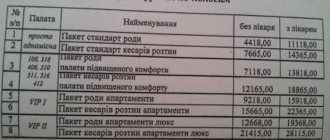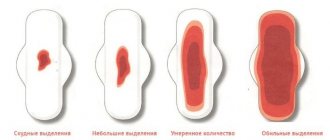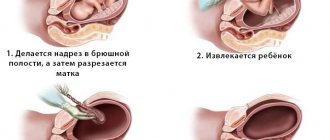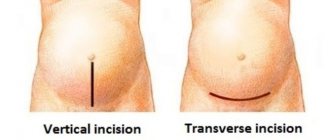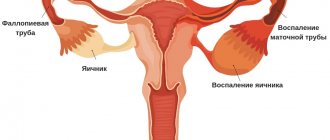In recent years, more and more women have a uterine scar after their first birth. This is problem. Scientists are racking their brains over the question of how many times can a caesarean section be performed and how to help such mothers have more children?
There are experiences of natural childbirth after the first cesarean section. This is done to enable a woman to have more children with less risk.
The surgical technique and suture material are being improved, anesthesiology is being developed, and new drugs are appearing. But the risk remains.
A repeat pregnancy with a uterine scar will be more dangerous and riskier than without a scar.
Many women with a uterine scar dream of large families. Unfortunately, not everyone who has had a cesarean section has children. Therefore, the question is also relevant for them: a caesarean section, how many times can it be done and why?
A caesarean section is an operation during which a baby is born through an incision in the anterior abdominal wall and uterus. But this process is not physiological, but artificial.
Nature created a woman capable of giving birth through the natural birth canal and giving birth multiple times. Man invented Caesarean. But it has complications.
Scar on the uterus
The uterus is a muscular organ. It can stretch 500 times during pregnancy and then return to its original size in 6 weeks. After the first operation, a scar remains on the uterus.
It consists of connective tissue that is not designed to stretch and then contract. 1.5 - 2 years after the operation, muscle fibers grow into the scar area and it becomes more elastic. But after 4-5 years, the scar undergoes sclerosis - excessive compaction.
Therefore, after a caesarean section, it is better to give birth next time between 2 and 4 years.
Before deciding on a second and subsequent pregnancies, it is necessary to be examined. Do an ultrasound of the uterus and scar. Together with the doctor, evaluate its viability. Additional examination or scar plastic surgery may be necessary.
Obstetrician-gynecologist: We don’t do cesarean sections at will, as in Latin American countries.
— Elena Nikolaevna, you have been observing pregnant women and women in labor for more than 30 years. How has their psychology changed since you entered medicine?
— Psychology changes because life changes. Previously, there was no Internet, women did not have the opportunity to share both positive and negative impressions with each other. Nowadays pregnant women watch and read a lot, and this does not dispel their fears. On the contrary, stress levels increase due to the fact that information about pregnancy and childbirth is often obtained from incompetent sources.
Elena Nikolaevna has been an obstetrician-gynecologist at the 5th City Clinical Hospital of Minsk since 1988, where from 1994 to 2020 she headed the obstetric observation department. Photo: personal archive.
I always tell expectant mothers that mental hygiene during pregnancy is very important - during pregnancy you should not read bad reviews or listen to stories about bad outcomes during childbirth. Women who went well during childbirth usually do not write, they simply enjoy motherhood and communication with the baby. That's why there are more negative reviews.
“Today women want to give birth in comfort, quickly and without negative consequences...
— Everyone has a different speed of labor, and you need to give birth at the speed inherent in your body. There is no need to strive to give birth quickly - rapid labor can increase birth trauma.
- In the days of our mothers, they often gave birth for 25 hours, sometimes the child was pushed out of the stomach with their elbows...
— Yes, our mothers gave birth less comfortably, the level of obstetric and neonatological aggression used to be very high. The woman gave birth, the baby was immediately taken away, he could be put to the breast within a day, feedings were carried out strictly according to the schedule, he was kept in the maternity hospital for 5-7 days after a normal birth, visits to maternity hospitals were prohibited. A generation of absolutely obedient people had to grow up...
Women who went well during childbirth usually do not write, they simply enjoy motherhood and communication with the baby. Therefore, there are more negative reviews on the Internet. Photo: Victor GILITSKY
Now children are growing up free, because they are free from birth: they are with their mothers, fed on demand.
As for speed, my teachers also said that the sun should not rise twice over a woman giving birth - that is, a woman should give birth within 24 hours. Now the brain processes information faster and makes decisions. I don’t think anyone is in labor for 25 hours these days.
— How long did the fastest birth in your practice last?
“I myself had two rapid labors: I gave birth to the first child for an hour and fifty, and the second for two hours. When you give birth so quickly, it is much more painful than when you give birth at a normal speed. The uterus must open the cervix three times faster, and to do this it makes more effort, and accordingly, childbirth is more painful. And the child does not have time to adapt when he flies out so quickly.
“I know cases of cerebral palsy after caesarean section”
— In some countries, up to 50% of pregnant women choose a caesarean section. Probably because it seems more comfortable: anesthesia - and almost immediately with the baby in your arms.
- What comfort? In a natural birth you gave birth and forgot, and after a Caesarean your stomach hurts for three days. Plus the recovery period is longer.
— I’ve heard more than once: “What difference does it make: either ruptures, or the stomach is sewn up - it all hurts...”
- But you can give birth without gaps. My women after the courses have much fewer tears and cuts in the perineum. If a woman prepares for childbirth, if she perceives it as a natural process, then the birth canal also opens naturally. These processes can be very physiological and beautiful. But we need to prepare for this.
From my own example, I can say that I was preparing for my second birth. After the first ones, I didn’t give birth for a long time, they were stressful for me due to such a high speed; the difference between my children is a little more than 11 years.
But I am very glad that I gave birth a second time, because the second birth completely rehabilitated the first. Although there were also painful contractions - because I gave birth quickly again, this is a feature of my character. The speed of childbirth is influenced by both the hormonal background and the woman’s temperament. But when we have information, there is less fear. The woman imagines step by step what will happen to her at each stage; she knows what the pain is for and what type of pain at each stage will be normal.
Doctors assure that giving birth has now become much more comfortable than 30 years ago. Photo: Victor GILITSKY
You need to prepare your body, learn to breathe, and be able to relax. Childbirth, in essence, is the ability to relax. It's like a river: if you float with the flow, you will be carried to the shore, if you resist, you begin to drown. The most important organ that must be ready for childbirth is the brain.
My grandmother - she herself gave birth to six children and attended births for the entire village - in response to my question “Grandmother, how to give birth?” - she answered: “What is it, dzitsyatka, to fight?..” And since childhood, I never even thought that childbirth was difficult. That's why I gave birth that way. And when I first saw childbirth in a movie - how a woman screamed after the first contractions - she decided that she had a placental abruption and urgently needed to be operated on. Many people today get information from television screens, but such fears cannot be shown, because it is not true.
— What, in your opinion, is connected with the current world fashion for caesarean sections? Because this is a more modern approach in medicine? And why is the figure of 30% stated in our country considered alarmingly high, and why should we strive for the supposedly optimal 15% of cesarean sections?
— I don’t presume to say that 30% is an alarmingly high figure. Caesarean sections should be performed as many times as indicated. It’s just that the more operations, the more complications. Caesarean is an abdominal operation, it is an entrance into the abdominal cavity. And Caesarean is not a more modern approach, not an innovation, it existed 100 years ago.
Yes, now after a cesarean section they are discharged for the fifth knock (after a natural birth - for the third), there is better quality anesthesia, suture material, they even use special glue to seal the wound, but the essence of the operation remains the same.
At the dawn of my youth, the rate of cesarean sections was low, then by the end of the 90s it increased, and then began to decline again. There will still be a caesarean section, but the numbers should be optimal.
If the percentage of operative delivery is reduced too much, the level of birth injuries and the number of children born with asphyxia may increase. If the percentage of cesarean sections increases significantly, the number of postoperative complications in women in labor will also increase. There must be a balance.
There is now a high percentage of cesarean sections in Latin American countries, perhaps because they can quickly give birth at the woman’s request. By the way, in Africa there is an unreasonably low percentage of cesarean sections, and both mothers and newborns suffer from complications.
— How many times can a woman give birth by caesarean section?
- And two, and three. Someone, refusing sterilization after the third cesarean, has four cesareans. But these are risks for a woman - the scar on the uterus may become thinner.
“Some people want to do a caesarean section so that they can get a healthy baby quickly, and then they say I’ll deal with the consequences later...
— Surgery is anesthesia, and there is always more blood loss than during childbirth. And what kind of guarantees can we even talk about? Medicine is not a manufacturing industry. Here a lot depends not only on the doctor, but also on the human body. After a caesarean section, it is more difficult to care for the baby, because physically the mother herself needs more support than after a natural birth.
- But the child will not get stuck in the birth canal, he will not have cerebral palsy. If the mother in such cases cannot give birth on her own for a long time, she still undergoes surgery. It will turn out as if you experienced both childbirth and a caesarean section at once...
“It’s okay if that’s the case, but it’s a benefit for the child: he was in labor and went through some stages of preparation for life in this world.” And I know of cases of cerebral palsy after cesarean section. Natural childbirth is not their cause. Cerebral palsy is not always a survivor of birth trauma. I have friends who had a planned cesarean section, and the child has cerebral palsy. The nature of cerebral palsy has not yet been fully studied - no one fully knows why such processes occur. Some children survive difficult births, but do not have cerebral palsy.
“We don’t do cesarean sections on request”
— What are the indications, contraindications and complications of cesarean section today? If a woman in labor is very afraid, can she refuse to give birth herself?
“We don’t do cesarean sections at will.” Caesarean sections can be planned or emergency. But for any operation there must be indications, and there are many of them in both cases. There are absolute indications, for example, placenta previa - in this case, the woman herself will not be able to give birth. Or 2 - 3rd degree of pelvic narrowing. There are relative indications: the woman’s age, long-term infertility, IVF - that is, a combination of factors.
So you say - the woman is afraid and wants a caesarean section. But if suddenly a complication arises during the operation, who will be to blame? The doctor will immediately ask him: “Why did they operate without indication?”
After a caesarean section, bleeding may occur, for example, as a result of the uterus not contracting. There are infectious complications, as after any operation. But in Belarus we have a very good maternity and childhood service. We can be proud of our obstetrics service; doctors are very competent and balanced in their approach to indications and contraindications.
Elena Nikolaevna has been working in the 5th City Clinical Hospital of Minsk for more than 30 years. Photo: 103.by.
We have low rates of perinatal mortality, a low percentage of complications, and maternity hospitals have priority supplies of medical equipment. Clinical protocols have changed to reduce obstetric aggression, and childbirth can be quite comfortable. For example, now women are less likely to visit antenatal clinics. Previously, women in labor were admitted to maternity hospitals at 40 weeks to induce labor. Now a pregnant woman may not be hospitalized until the 41st week. If you are afraid of pain, you can have an epidural anesthesia.
— Do they do it for caesarean sections too?
— No, during the operation either general anesthesia or spinal anesthesia is used - it is somewhat different from epidural. During spinal anesthesia, the woman is conscious, she immediately sees the baby, and she can even put him to the breast.
But I don’t believe that many people want to have a caesarean section. Women who come to my courses are often afraid of a caesarean section. They are precisely focused on giving birth themselves, experiencing all the nuances of childbirth and helping their newborn baby at every stage.
— If the first is a caesarean, can I give birth the second time myself?
- 15 - 20% give birth on their own after surgery. I had a woman who, after a cesarean section, gave birth to two more. After examining the pregnant woman, hospital doctors decide whether the woman can have a natural birth. The only thing is that such a woman in labor will not be able to receive epidural anesthesia. She cannot completely turn off pain, since pain is one of the signs of an impending uterine rupture, and the woman must control her sensations. If something goes wrong during such a birth, the patient will be operated on immediately. No doctor would risk a woman's health.
— Elena Nikolaevna, you are not only an obstetrician-gynecologist, but also a perinatal psychologist. I've heard a lot about the characteristics of children after cesarean. Hyperactive - is this about them?
— No, hyperactivity can occur after normal childbirth. But the principle is the same: how we are born is how we live. The experience that children gain during natural childbirth, caesareans need to gain after birth, which they do very successfully in a playful format. They have very interesting games, in the game the kids seem to be re-enacting their birth. There is definitely no need to worry about the Caesars, children are very wise - they will always more than get what they lacked at some stage.
— Is it true that fear is the main enemy of a woman in labor?
- Yes, how you give birth depends on your mood. Belarusians have a good saying: “Think well, be well.” And this attitude must be developed in advance at the subconscious level. You need to understand the whole process so that you have a clear picture in your head of what will happen. During the courses, pregnant women and I write a birthing scenario - and many then give birth according to their own scenario.
DOSSIER "KP"
Elena KORSAK is an obstetrician-gynecologist of the highest qualification category. Graduated from the medical faculty of the Minsk Medical Institute. From 1988 to the present - a doctor at the 5th City Clinical Hospital of Minsk, where from 1994 to 2015 she was the head of the obstetric observation department. In 2016, she founded the school of conscious parenting “Briochinka - Planet of the Family”.
Photo: 103.by.
Spikes
After a single cesarean section, adhesions remain in the abdominal cavity. These are connective tissue cords between the uterus, fallopian tubes, intestinal loops, and bladder.
In ordinary life, they cause discomfort and nagging pain in the lower abdomen, disrupting the functioning of internal organs: intestines, bladder.
During the subsequent operation, it is difficult to enter the abdominal cavity and remove the child. For repeated operations, they must first be dissected.
This lengthens the operation time and increases blood loss. Damage and rupture of adhesions during surgery can lead to injury to internal organs: intestines, urinary tract, fallopian tubes, ovaries.
Advice: after the first operation, it is necessary to prevent the formation of adhesions. To do this, you need to do gymnastics 3-4 hours after the operation. Get up and move as soon as the doctor allows.
Is it worth the surgery?
Of course, if there are no indications, the operation is not performed. Many patients are afraid to give birth, fearing severe pain. However, these sensations disappear as soon as the child is born. Fear is not an indication for surgery!
The birth of a baby is a natural process, and ideally it should not cause pain. Caesarean section is considered a serious surgical procedure that can cause side effects.
Complications of this procedure are unpredictable and can negatively affect a woman’s health. Therefore, the decision to perform such an operation is made solely on the basis of strict indications. A woman’s emotions and experiences should not be a reason for such interference.
In some cases, situations arise when pregnancy is accompanied by some anomalies. This increases the risk of induced labor. In such cases, many questions arise, one of which is how many times a cesarean section can be performed.
Bleeding
During cesarean section, blood loss is always high. And if something goes wrong, the bleeding can become very intense. Possible outcome is blood transfusion. This is stress for the immune system. Load on the kidneys and heart.
With each subsequent pregnancy, the uterus will contract worse. Especially if the uterus is overstretched - multiple pregnancy, large fetus, polyhydramnios. A scar on the uterus will also prevent its contraction and recovery after childbirth. All this increases blood loss.
Indications for use
For an operation to be carried out, there must be certain indicators. Doctors decide to use a cesarean section even during the patient’s pregnancy, but an emergency operation is not excluded. These indicators are the main ones for the baby to be born this way when the operation is carried out as planned:
- the child is too large and the mother’s pelvis is small;
- closure of the birth canal;
- pregnancy with several children at the same time;
- incorrect position of the fetus: transverse or pelvic;
- genital herpes;
- threat of uterine rupture due to a large scar after previous operations;
- cervical fibroids;
- diseases that can cause harm to mother and child during natural childbirth;
- complicated pregnancy.
In addition to planned caesarean sections, emergency operations may be performed. This occurs when natural childbirth cannot be completed successfully. How many times they will be carried out depends on many indicators. These indicators include:
- sudden cessation of labor;
- lack of oxygen for the fetus;
- possibility of uterine rupture or placental abruption.
Blood clots
After surgery, the risk of blood clots in organs and tissues increases. This may lead to disruption of their operation. The most dangerous is blood clots getting into the lungs. This is accompanied by respiratory arrest and death. Ladies with excess weight, diabetes, hypertension and varicose veins are at greater risk than others.
If you have varicose veins, lie down on the operating table with your legs wrapped in elastic bandages. Elastic stockings must be worn before and after surgery.
What is important to know?
To avoid negative consequences, you need to know the following rules:
- Doctors do not recommend performing a cesarean section more than once every two years. Immediately after the intervention, pregnancy is strictly prohibited, as this poses serious health risks. During this period, childbirth and abortion are very dangerous.
- Caesarean section without significant risks for a woman can be done twice in a lifetime. In some cases, doctors allow a third operation.
- When carrying out three procedures, many experts recommend sterilization for women.
A caesarean section is considered a major operation that can lead to negative health consequences. Therefore, it can only be performed if there are strict indications.
Natural birth after cesarean
There is an opinion among experts that after the birth of a baby using abdominal surgery, vaginal birth is undesirable. When an expectant mother, who previously had a cesarean section, decides to give birth to her second child without surgery, she is under increased medical supervision. The child's condition is constantly monitored using special equipment, and uterine contractions are monitored.
The success of vaginal birth after surgery at the birth of the first baby is reduced if:
- the previous operation took place due to the baby getting stuck in the birth canal;
- the woman in labor is overweight;
- labor was induced using hormones.
